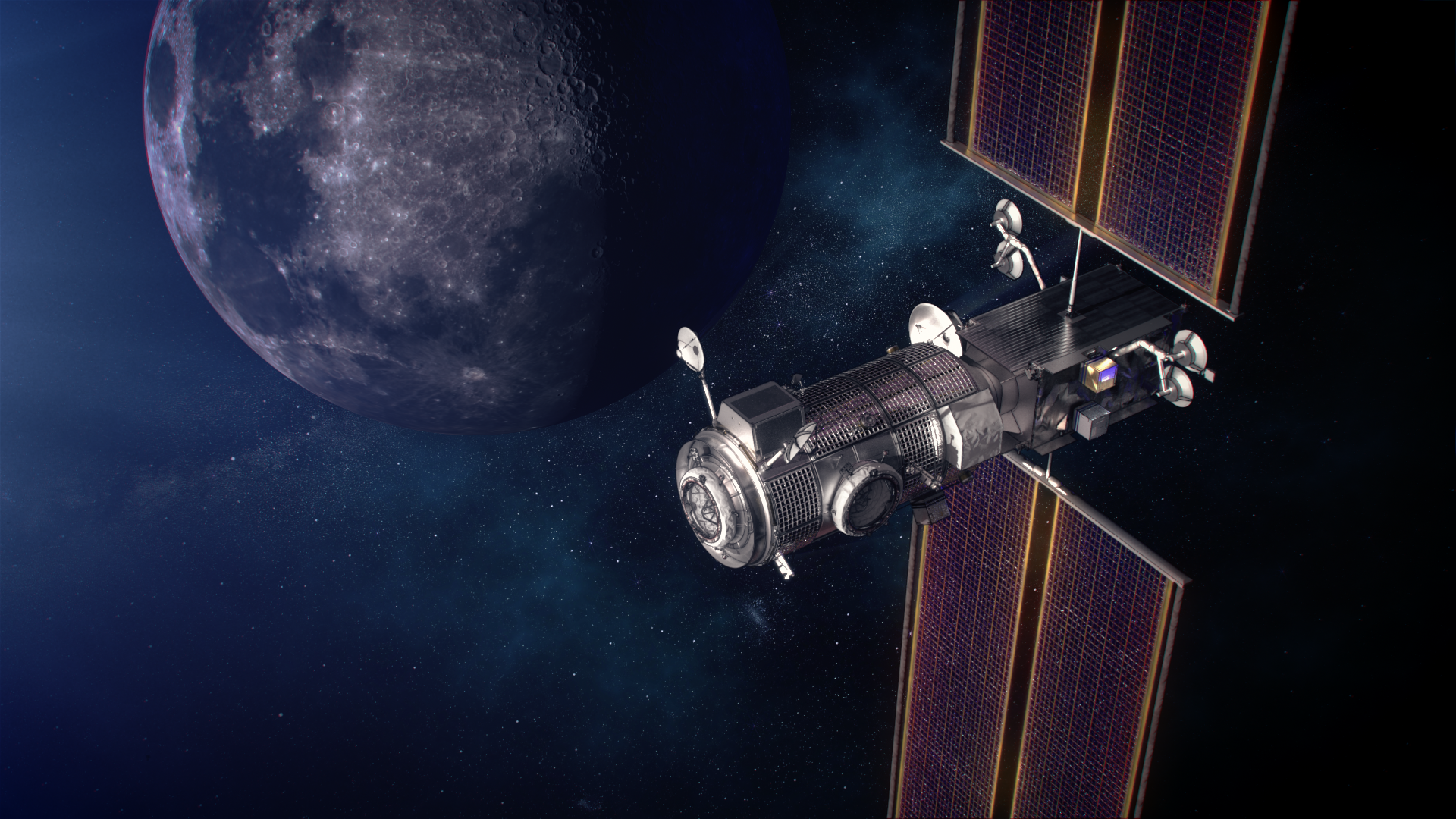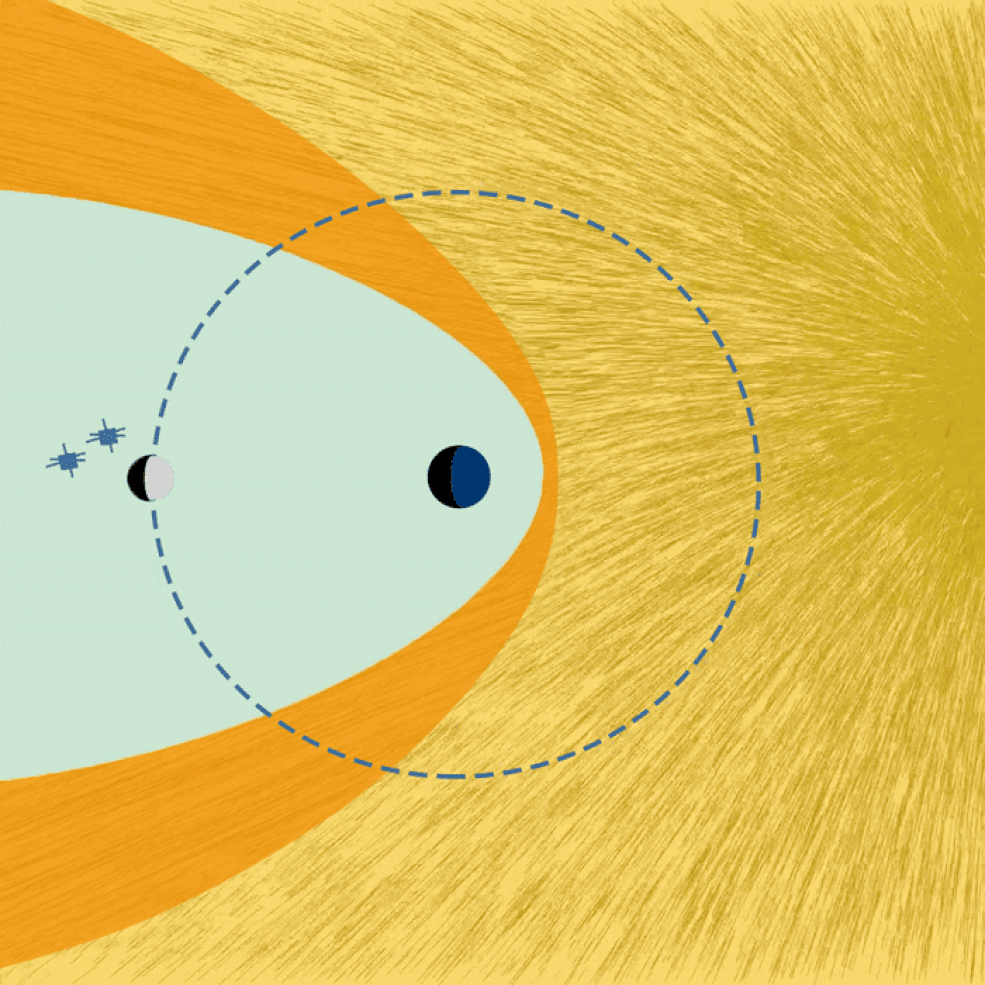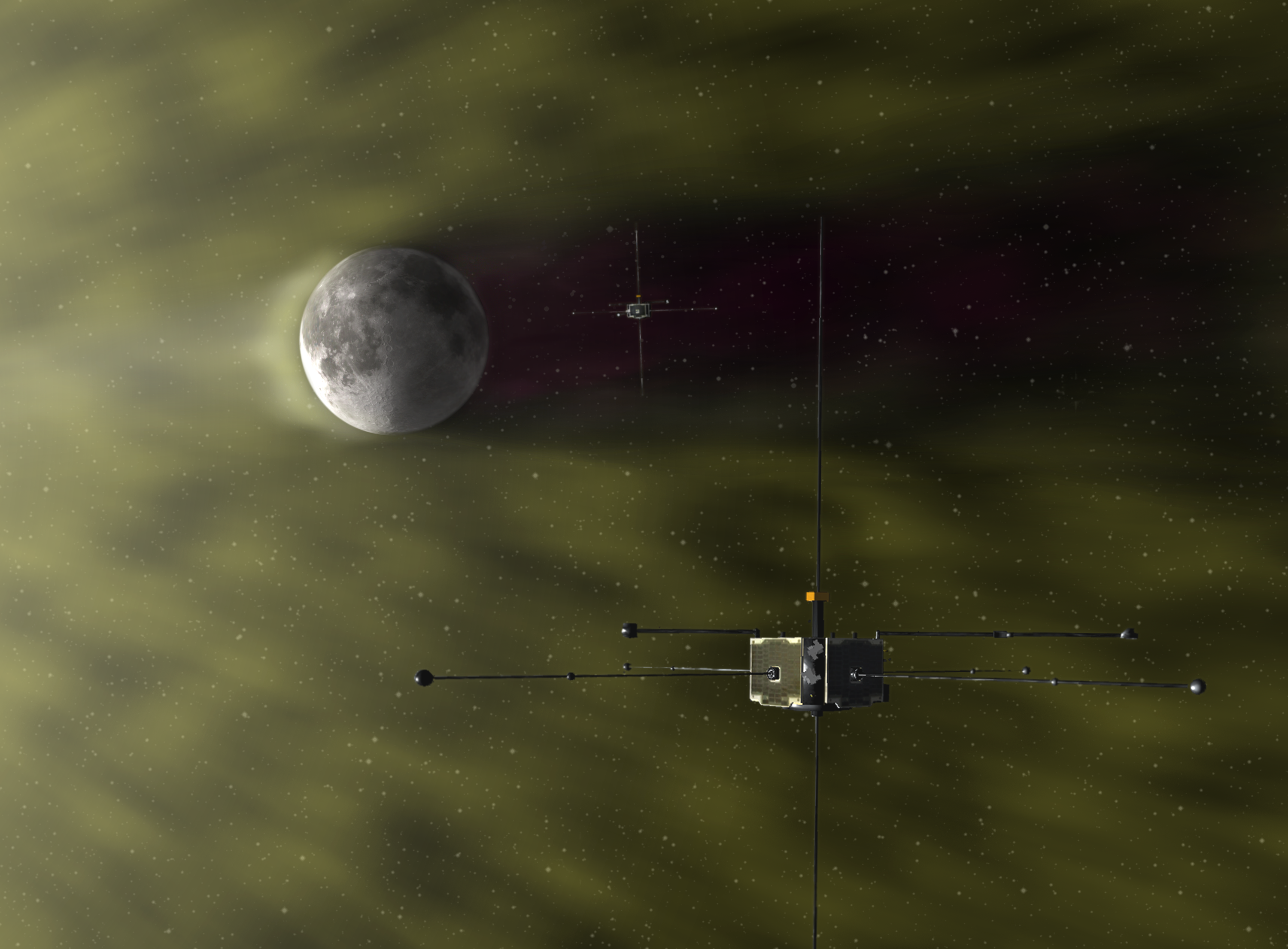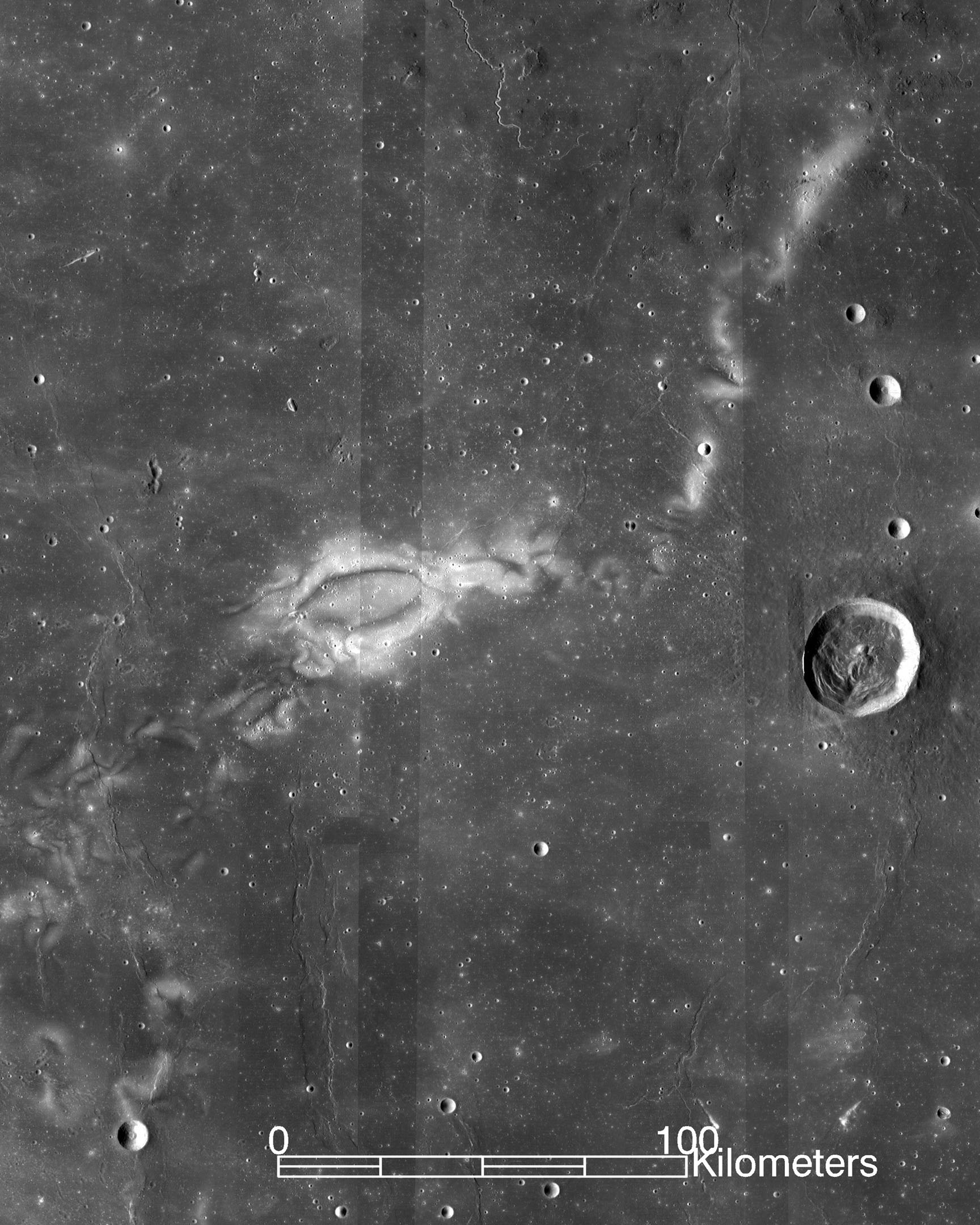THEMIS-ARTEMIS
Time History of Events and Macroscale Interactions during Substorms (THEMIS) - Acceleration, Reconnection, Turbulence and Electrodynamics of Moon's Interaction with the Sun (ARTEMIS)

Note: This page refers to the twin robotic spacecraft currently studying the Moon. For details on NASA's new Artemis mission to return astronauts to the lunar surface, including the first woman and the next man, visit: www.nasa.gov/artemis
What is THEMIS-ARTEMIS?
NASA's THEMIS-ARTEMIS mission is made up of two probes: P1 and P2. They were originally part of the successful THEMIS (Time History of Events and Macroscale Interactions during Substorms) mission that orbited Earth and studied the aurora. NASA redirected the two probes to the Moon, where they became the ARTEMIS (Acceleration, Reconnection, Turbulence and Electrodynamics of the Moon's Interaction with the Sun) mission.
- Both spacecraft arrived in lunar orbit in 2011.
- The twin orbiters have contributed to lunar and Earth science and have provided data on the solar wind.
| Nation | United States of America (USA) |
| Objective(s) | Earth–Moon L1 and L2 Lagrange Points, Lunar Orbits |
| Spacecraft | THEMIS B / THEMIS C |
| Spacecraft Mass | 278 pounds (126 kilograms) each |
| Mission Design and Management | NASA / University of California–Berkeley |
| Launch Vehicle | Delta 7925-10C (no. D323) |
| Launch Date and Time | Feb. 17, 2007 / 23:01:00 UT |
| Launch Site | Cape Canaveral Air Force Station, Fla. / SLC-17B |
| Scientific Instruments |
|
Firsts
- ARTEMIS is the first mission to orbit the Moon's Lagrangian points—points on either side of the Moon where the Moon and Earth's gravity balance perfectly
Key Dates
Feb. 17, 2007: Launch
Jan. 1, 2009: THEMIS-P1 and P2 are Reassigned, Renamed and Redirected to the Moon
Aug. 25, 2010: ARTEMIS-P1 Arrives at the L2 Lagrange Point
Oct. 22, 2010: ARTEMIS-P2 Arrives at the L1 Lagrange Point
In Depth: THEMIS-ARTEMIS
The two ARTEMIS lunar orbit missions were repurposed from the original Time History of Events and Macroscale Interactions during Substorms (THEMIS) mission that involved five NASA satellites: THEMIS A, B, C, D and E. The satellites were originally launched to study a type of magnetic phenomena called substorms in Earth’s magnetosphere that tend to intensify auroras near Earth’s poles.
Each of the five satellites carried identical instrumentation. After a burn of the third stage, the five THEMIS spacecraft—initially joined but soon separated—were deposited into a 290 x 54,270 mile (469 × 87,337-kilometer) orbit around Earth at 16 degrees.
In a “string-of-pearls” configuration, the five satellites carried out their initial mission without any significant anomalies.
On May 19, 2008, Space Sciences Laboratories, developer of the spacecraft at University of California–Berkeley, announced that NASA had extended the THEMIS mission to 2012 and that two of the THEMIS satellites, B and C, would be sent into lunar orbit as part of a new mission under the name ARTEMIS (Acceleration, Reconnection, Turbulence and Electrodynamics of the Moon’s Interaction with the Sun).
In this new mission, THEMIS B and C were renamed ARTEMIS P1 and ARTEMIS P2, respectively, and redirected to study the Earth-Moon Lagrange points, the solar wind, the Moon’s plasma wake, and the interaction between Earth’s magnetotail and the Moon’s own weak magnetism.
The “P1” and “P2” designations were from the THEMIS mission which used “P1” and “P2” to denote the operational orbits of THEMIS B and C.
On the 40th anniversary of the Apollo 11 landing, July 20, 2009, ARTEMIS P1 and P2 officially began low thrust maneuvers that, over the course of the following year-and-a-half, led them to the L2 and L1 Lagrange points, opposite the near and far sides of the Moon, respectively. This phase included a lunar flyby on March 28, 2010, by ARTEMIS P2.
On Aug. 25, 2010, an engine burn propelled ARTEMIS P1 into orbit around the Earth-Moon L2 Lagrange point, located on the far side of the Moon, about 38,000 miles (61,300 kilometers) above the lunar surface. This was the first time that a spacecraft had successfully entered orbit around an Earth-Moon libration point.
The second spacecraft, ARTEMIS P2, arrived at L1 on Oct. 22, 2010, by which time P1 had completed about four revolutions around L2.
The station-keeping at the Lagrange points on the way to the Moon was designed to avoid Earth’s long shadows and to keep the spacecraft operational. Once at the two Lagrange points, both spacecraft collected magnetospheric data from opposite sides of the Moon, critical for simultaneous measurements of particles and electric and magnetic fields to build a three-dimensional map of the acceleration of energetic particles near the Moon’s orbit.
On June 27, 2011, ARTEMIS P1 successfully entered lunar orbit with an initial orbit of roughly 2,200 × 17,000 miles (3,543 × 27,000 kilometers) while its sister vehicle, ARTEMIS P2 arrived July 17, 2011, after a two-year journey from Earth orbit.
Over the next three months, mission controllers implemented a series of maneuvers to move the second spacecraft into an orbit with a period of 27.5 hours, similar to its companion but moving in the opposite direction.
The two spacecraft, orbiting in opposite directions around the Moon, began to provide the first 3D measurements of the Moon’s magnetic field to determine its regional influence on solar wind particles. More specifically, they revealed new information on the lunar “wake” that extends about 12 lunar radii and in particular how its void distorts the interplanetary magnetic field causing it to bulge moonward.
Mission scientists marked the 10th anniversary of the launch in February 2017 and both spacecraft continue to operate in good health.
Additional Resources
National Space Science Data Center Master Catalog: THEMIS-B (ARTEMIS-P1)
National Space Science Data Center Master Catalog: THEMIS-C (ARTEMIS-P2)
Out of THEMIS, ARTEMIS: Earth's loss is Moon's gain
Two NASA Spacecraft Begin New Exploration Assignments
Key Source
Siddiqi, Asif A. Beyond Earth: A Chronicle of Deep Space Exploration, 1958-2016. NASA History Program Office, 2018.




































